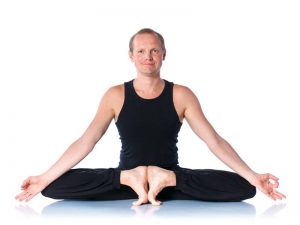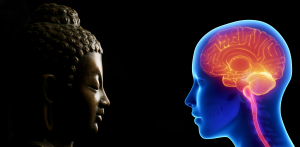Change the Brain to Improve Fibromyalgia with Tai Chi
By John M. de Castro, Ph.D.
“tai chi appears to be as effective or better for managing fibromyalgia . . . and patients are more likely to attend tai chi classes than aerobic exercise sessions.” – NCCIH
Fibromyalgia is a mysterious disorder whose causes are unknown. It is very common affecting over 5 million people in the U.S., about 2% of the population with about 7 times more women affected than men. It is characterized by widespread pain, abnormal pain processing, sleep disturbance, and fatigue that lead to psychological distress. Fibromyalgia may also have morning stiffness, tingling or numbness in hands and feet, headaches, including migraines, irritable bowel syndrome, sleep disturbances, thinking and memory problems, and painful menstrual periods. The symptoms are so severe and debilitating that about half the patients are unable to perform routine daily functions and about a third have to stop work. Although it is not itself fatal, suicide rates are higher in fibromyalgia sufferers. Clearly, fibromyalgia greatly reduces the quality of life of its’ sufferers.
There are no completely effective treatments for fibromyalgia. Symptoms are generally treated with pain relievers, antidepressant drugs and exercise. But these only reduce the severity of the symptoms and do not treat the disease directly. Mindfulness practices have also been shown to be effective in reducing pain from fibromyalgia. Tai Chi is an ancient Chinese practice involving mindfulness and gentle movements. They are easy to learn, safe, and gentle. So, it may be appropriate for patients with fibromyalgia where exercise can produce painful flares.
In general, mindfulness practices both produce psychological and physical benefits and also change the structure and connectivity of the brain. Indeed, Tai Chi practice has been shown to improve the symptoms of fibromyalgia. So, Tai Chi may be beneficial for fibromyalgia by altering the brain systems involved in the disorder.
In today’s Research News article “Altered resting state functional connectivity of the cognitive control network in fibromyalgia and the modulation effect of mind-body intervention.” (See summary below or view the full text of the study at: https://www.ncbi.nlm.nih.gov/pmc/articles/PMC6214794/ ) Kong and colleagues recruited adult patients with fibromyalgia and a group of age, gender, and body size matched controls. The fibromyalgia patients received Tai Chi practice twice a week for 1-hour for 12 weeks. All participants underwent functional Magnetic Resonance Imaging (fMRI) of their brains before and after the 12-week period and also completed measures of depression, and fibromyalgia impact, including function, overall impact, and symptom severity.
They found that after Tai Chi training there was a significant improvement in the fibromyalgia patients’ depression, and fibromyalgia impact, including function, overall impact, and symptom severity. They examined a set of connected brain structures (frontal gyrus, parietal gyrus, and anterior cingulate cortex) called the cognitive control network. At baseline, the fibromyalgia patients had significantly greater levels of resting functional connectivity between the structures in this network. After 12 weeks of Tai Chi practice the functional connectivity between the structures in the cognitive control network were further significantly increased. In addition, they found that the greater the increase in functional connectivity the greater the improvement in overall fibromyalgia symptoms.
The ability of Tai Chi to improve the symptoms of fibromyalgia has been documented preciously. The contribution of the present study is to document the differences in the brains of fibromyalgia patients and healthy people and the changes in the brain of these patients that occur with Tai Chi practice. In particular the cognitive control network had increased functional connectivity in these patients and that connectivity increased significantly after Tai Chi practice. This may indicate the neural mechanism by which Tai Chi practice improves fibromyalgia symptoms. The fact that the amount of connectivity change was associated with the degree of improvement, supports this inference.
The baseline difference in connectivity may indicate that the way the patients’ brains adapted to help deal with the impact of fibromyalgia and Tai Chi practice further improved this adaptation. The cognitive control network is involved in high level thinking, attention, and executive control. Hence, these patients may be employing high level thought processes including the allocation of attention to help deal with the disease and Tai Chi practice further improves their ability to do this. It has been shown that attention to the pain in the present moment while not thinking about its past occurrences or worrying about the future reduces the severity of the pain. This may be what the brain is doing to help cope with fibromyalgia symptoms; using attention to mitigate the pain.
So, change the brain to improve fibromyalgia with Tai Chi
“subjects with fibromyalgia, reported benefits (compared with control groups or before/after comparisons) of Tai Chi in core symptom domains for this condition (pain, sleep, impact, physical function and mental function).” – Jana Sawynok
CMCS – Center for Mindfulness and Contemplative Studies
This and other Contemplative Studies posts are also available on Google+ https://plus.google.com/106784388191201299496/posts and on Twitter @MindfulResearch
Study Summary
Kong, J., Wolcott, E., Wang, Z., Jorgenson, K., Harvey, W. F., Tao, J., Rones, R., & Wang, C. (2019). Altered resting state functional connectivity of the cognitive control network in fibromyalgia and the modulation effect of mind-body intervention. Brain imaging and behavior, 13(2), 482–492. https://doi.org/10.1007/s11682-018-9875-3
Abstract
This study examines altered resting state functional connectivity (rsFC) of the cognitive control network (CCN) in fibromyalgia patients as compared to healthy controls, as well as how effective interventions, such as Tai Chi, can modulate the altered rsFC of the CCN. Patients with fibromyalgia and matched healthy subjects were recruited in this study. Fibromyalgia patients were scanned 12 weeks before and after intervention. The bilateral dorsolateral prefrontal cortex (DLPFC) was used as a seed to explore the rsFC of the CCN. Data analysis was conducted with 21 patients and 20 healthy subjects. Compared to healthy subjects, fibromyalgia patients exhibited increased rsFC between the DLPFC and the bilateral rostral anterior cingulate cortex (rACC) and medial prefrontal cortex (MPFC) at baseline. The rsFC between the CCN and rACC/MPFC further increased after Tai Chi intervention, and this increase was accompanied by clinical improvements. This rsFC change was also significantly associated with corresponding changes in the Overall Impact domain of the Revised Fibromyalgia Impact Questionnaire (FIQR). Further analysis showed that the rACC/MPFC rsFC with both the PAG and hippocampus significantly decreased following Tai Chi intervention. Our study suggests that fibromyalgia is associated with altered CCN rsFC and that effective treatment may elicit clinical improvements by further increasing this altered rsFC. Elucidating this mechanism of enhancing the allostasis process may deepen our understanding of the mechanisms underlying mind-body intervention non-pharmacological treatment of fibromyalgia and facilitate the development of new pain management methods.
https://www.ncbi.nlm.nih.gov/pmc/articles/PMC6214794/









